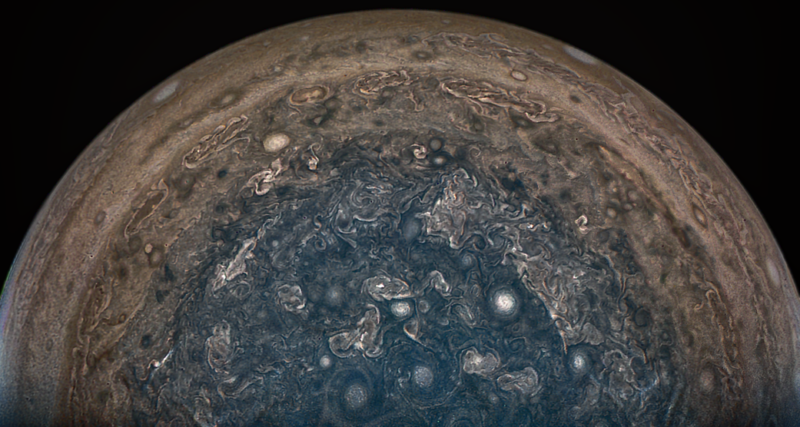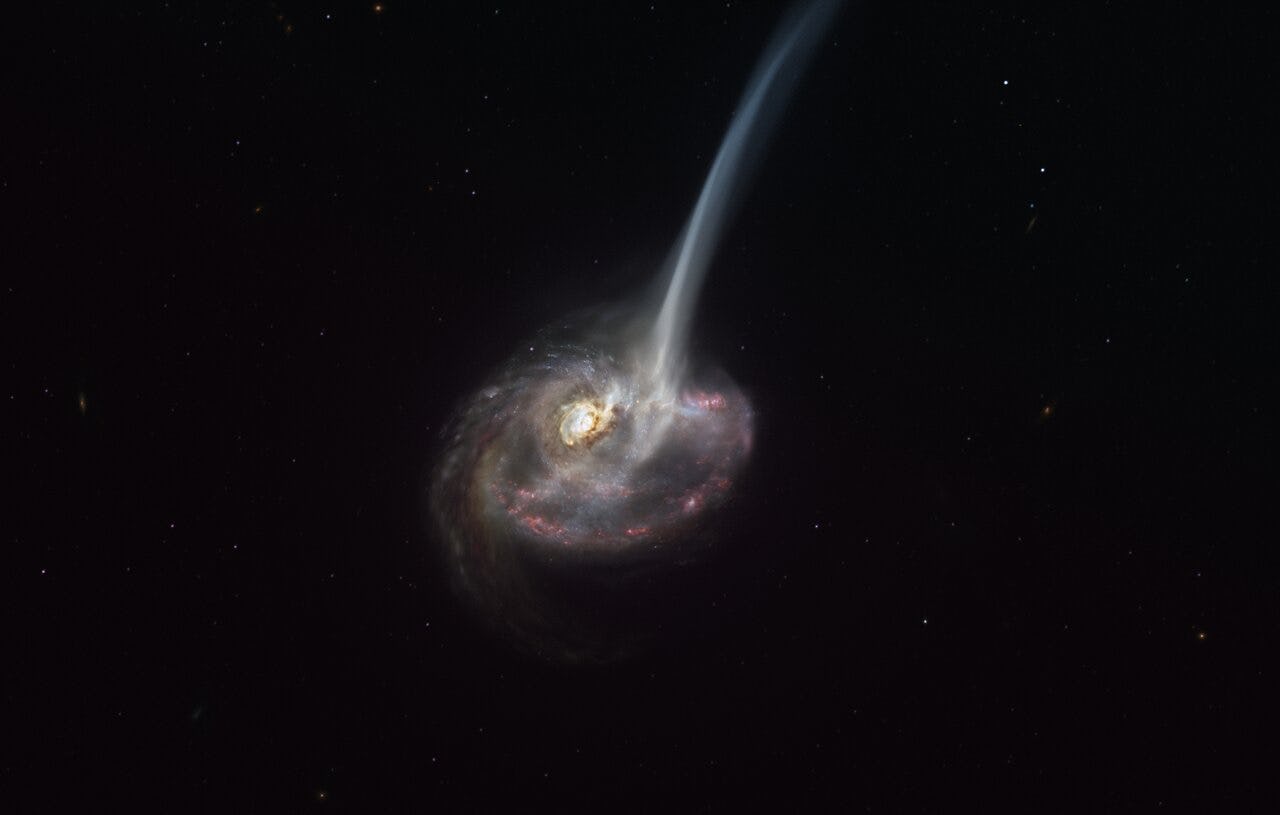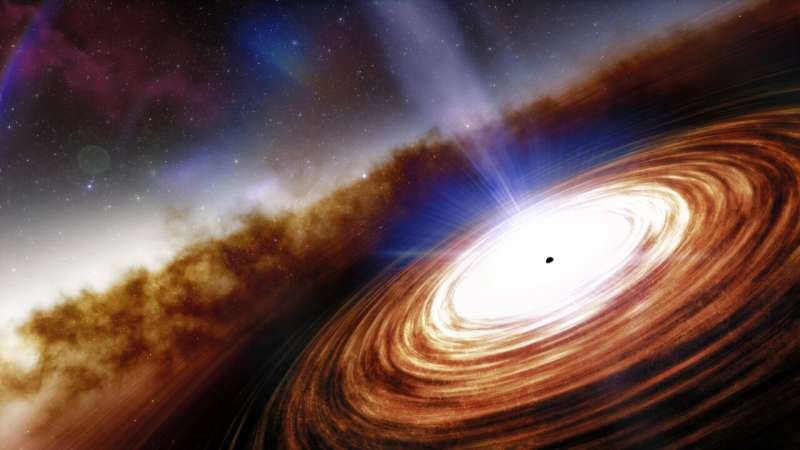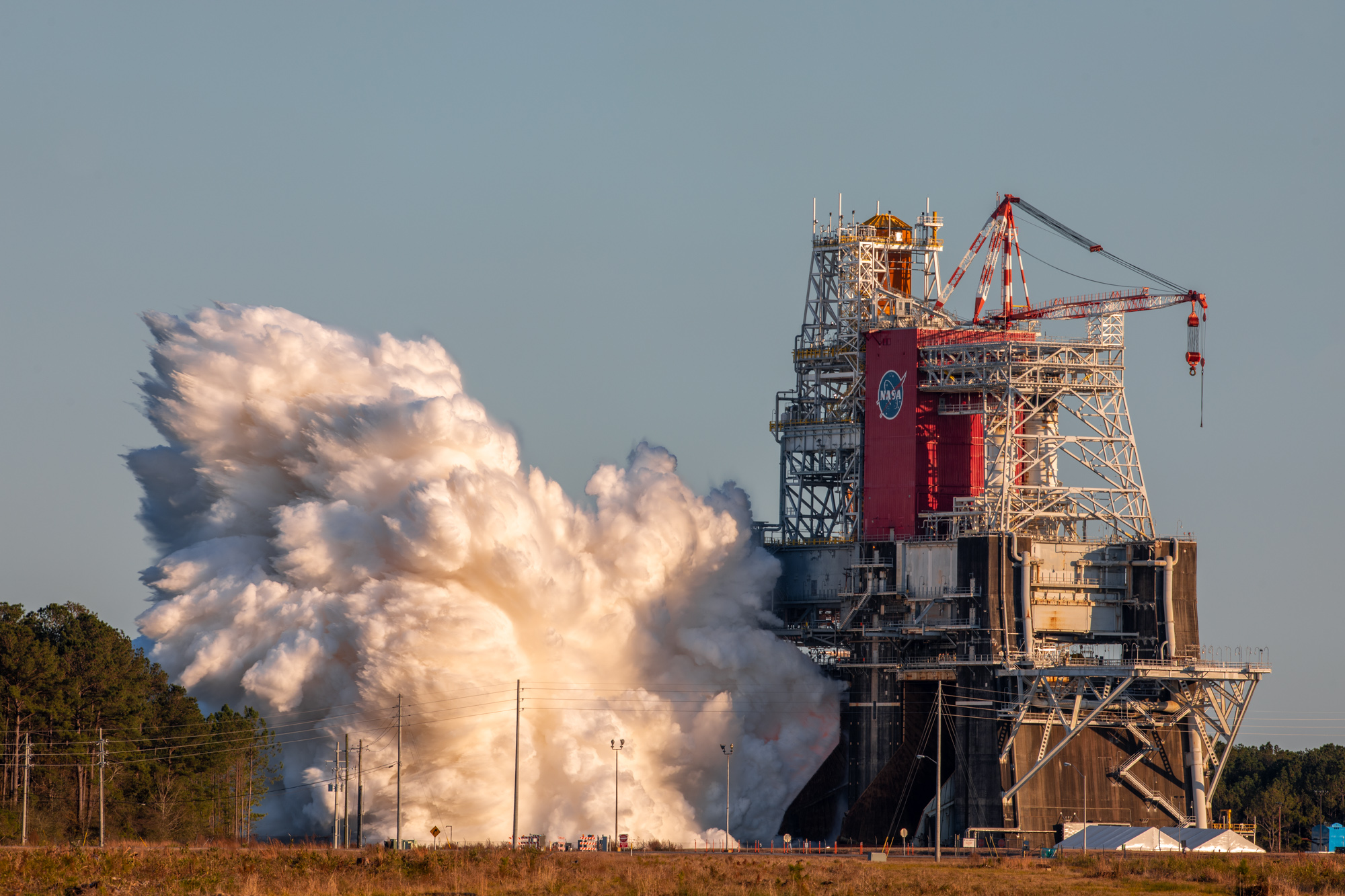Previous 1 ... 178 179 180 181 182 183 184 ... 241 Next
Get out early to observe them, however — an hour after sunset, only Jupiter remains, and it’s a scant 1.5° above the horizon. The trio remain close all week and change position quickly, making a great sunset target for the next several days.
https://astronomy.com/news/observing/20 ... ry-8-to-15

NASA has announced that it will extend the missions for two of its interplanetary explorers launching during the last decade—the Juno spacecraft orbiting Jupiter and the InSight lander on the surface of Mars.
The Juno extension means the spacecraft will now operate in the Jovian system through 2025. This will effectively transform the spacecraft from a mission to study Jupiter into a full-fledged Jovian system explorer, complete with close flybys of several of Jupiter's moons as well as its system of rings.
Back in the inner Solar System on the surface of Mars, the InSight mission will now run through December 2022. During these additional two years, the lander will continue to operate its seismometer to identify Marsquakes, as well as continue to collect detailed information about weather at the surface.
After determining that both missions had done exceptional science to date, an independent review panel recommended extensions of both to NASA. "The Senior Review has validated that these two planetary science missions are likely to continue to bring new discoveries and produce new questions about our solar system," said Lori Glaze, director of the planetary science division at NASA Headquarters in Washington.
https://arstechnica.com/science/2021/01 ... on-flybys/

NASA has announced that it will extend the missions for two of its interplanetary explorers launching during the last decade—the Juno spacecraft orbiting Jupiter and the InSight lander on the surface of Mars.
The Juno extension means the spacecraft will now operate in the Jovian system through 2025. This will effectively transform the spacecraft from a mission to study Jupiter into a full-fledged Jovian system explorer, complete with close flybys of several of Jupiter's moons as well as its system of rings.
Back in the inner Solar System on the surface of Mars, the InSight mission will now run through December 2022. During these additional two years, the lander will continue to operate its seismometer to identify Marsquakes, as well as continue to collect detailed information about weather at the surface.
After determining that both missions had done exceptional science to date, an independent review panel recommended extensions of both to NASA. "The Senior Review has validated that these two planetary science missions are likely to continue to bring new discoveries and produce new questions about our solar system," said Lori Glaze, director of the planetary science division at NASA Headquarters in Washington.
https://arstechnica.com/science/2021/01 ... on-flybys/
This is really cool. Jupiter's moons have captivated me since I was a kid, and I'd love to see more and more of them!
-J.
A single galaxy encompasses billions of stars and their solar systems, all held together by the sheer force of gravity.
But even galaxies die.
After all of its star-forming gas runs out, and all of its stars have burned out, a galaxy dies. It will one day happen to the Milky Way, too.
Until today, astronomers had never witnessed a distant galaxy on its death bed. However, recent observations by the Atacama Large Millimeter/submillimeter Array (ALMA) have given astronomers their first view of a large galactic being nearing its death.
The findings are detailed in a study published Monday in the journal Nature Astronomy, and help astronomers in their understanding of how galaxies evolve over time until they die.
The team of astronomers behind the new study stumbled upon this dying galaxy by mere accident. As they were observing a host of nearly 100 galaxies in distant locations, they noticed something odd about galaxy ID2299.
Although ALMA, the array of telescopes located in northern Chile, had only caught a glimpse of ID2299 for a few minutes, the researchers could see that the galaxy had a tail of gas that was being ejected from it. You can see the gas ejecting itself from the galaxy in the rendering below:

https://www.inverse.com/science/astrono ... e-of-death
From visiting mission control to seeing where space robots are built, the interactive tour lets online users explore the historic space facility from anywhere in the world.
Have you ever wondered were the rovers we send to Mars are built, or where spacecraft that explore the cosmos return their data to Earth? In a typical year, over 30,000 people visit NASA’s Jet Propulsion Laboratory in-person; now, for the first time ever, you can see the Southern California facility from anywhere in the world on avirtual tour.
https://www.jpl.nasa.gov/news/explore-n ... tual-tour/
https://www.jpl.nasa.gov/virtual-tour/

A team of astronomers led by the University of Arizona has observed a luminous quasar 13.03 billion light-years from Earth—the most distant quasar discovered to date. Dating back to 670 million years after the Big Bang, when the universe was only 5% its current age, the quasar hosts a supermassive black hole equivalent to the combined mass of 1.6 billion suns.
In addition to being the most distant—and by extension, earliest—quasar known, the object is the first of its kind to show evidence of an outflowing wind of super-heated gas escaping from the surroundings of the black hole at a fifth of the speed of light. In addition to revealing a strong quasar-driven wind, the new observations also show intense star formation activity in the host galaxy where the quasar, formally designated J0313-1806, is located.
The researchers will present their findings, which have been accepted for publication in Astrophysical Journal Letters, during a press conference and a scientific talk at the 237th Meeting of the American Astronomical Society, which will be held virtually Jan. 11-15.
The previous record-holder among quasars in the infant universe was discovered three years ago. The UArizona team also contributed to that discovery. Quasars are thought to result from supermassive black holes gobbling up surrounding matter, such as gas or even entire stars, resulting in a maelstrom of superheated matter known as an accretion disk that swirls around the black hole. Because of the enormous energies involved, quasars are among the brightest sources in the cosmos, often outshining their host galaxies.
Although J0313-1806 is only 20 million light-years farther away than the previous record holder, the new quasar contains a supermassive black hole twice as heavy. This marks a significant advancement for cosmology, as it provides the strongest constraint yet on the formation of black holes in the early universe.
https://phys.org/news/2021-01-distant-q ... holes.html
Whether it's watching for aurora, shooting stars, or the planets, Edmonton-area star gazers have a new tool to get a closer look at the night sky.
The Hesje Observatory is located in the Beaver Hills Dark Sky Preserve, a 300-square-kilometre area near Miquelon Lake, southeast of Edmonton.
The observatory opened Tuesday, making the University of Alberta the first university in western Canada to have such a facility in a dark sky preserve.
The telescope will help open up a whole new universe for people, says Glynnis Hood, manager of the research station and an environmental sciences professor at Augustana Campus.
"They can see these wonderful events," Hood said Tuesday on Edmonton AM. "We just had a conjunction [when planets appear to be closer together] that happened a couple of weeks ago; those sorts of major events can really draw people to the observatory and share that with the public."
A dome at the top of the tower allows for a clear view of the heaven above the trees. The dome includes an observation deck where people can stand and look up and even bring their own telescopes.
"We have a wonderful tower and a telescope that's set inside the tower and then a portable telescope as well," Hood said.
The observatory is the result of a donation of $500,000 from University of Alberta alumnus and retired businessman Brian Hesje.
https://www.cbc.ca/news/canada/edmonton ... -1.5870194
I'd be more excited for the new observatory if all those people in the photo didn't use it as an excuse to show off the fact that they're wearing masks OUTSIDE of all places. Can't we have a single picture about something non-coronavirus WITHOUT masks?
Seriously. This is getting very tiresome.
MORE OUTER SPACE! LESS MASK!
-J.
-J.
Have you ever read Piers Anthony's Space Tyrant series? Much of the series revolves around the protagonist migrating from a moon to Jupiter, analogous to the United States now. It's probably a bit dated now, but I read it back in the 80s and thought it was quite a fund read.
https://en.wikipedia.org/wiki/Bio_of_a_Space_Tyrant
^^^ Awesome. It's hard not to look at that and not see things I've seen here on Earth. It becomes obvious Earth and Mars have similar histories.
Scientists discover the oldest supermassive black hole, and it's too big
https://www.inverse.com/science/oldest- ... st-too-big

STENNIS SPACE CENTER, Miss. — For a few moments, it seemed like the Space Launch System saga might have a happy ending. Beneath brilliant blue skies late on Saturday afternoon, NASA’s huge rocket roared to life for the very first time. As its four engines lit and thrummed, thunder rumbled across these Mississippi lowlands. A giant, beautiful plume of white exhaust billowed away from the test stand.
It was all pretty damn glorious until it stopped suddenly.
About 50 seconds into what was supposed to be an 8-minute test firing, the flight control center called out, “We did get an MCF on Engine 4.” This means there was a “major component failure” with the fourth engine on the vehicle. After a total of about 67 seconds, the hot fire test ended.
During a post-flight news conference, held outside near the test stand, officials offered few details about what had gone wrong. "We don't know what we don't know," said NASA Administrator Jim Bridenstine. "It's not everything we hoped it would be."
He and NASA's program manager for the SLS rocket, John Honeycutt, sought to put a positive spin on the day. They explained that this is why spaceflight hardware is tested. They expressed confidence that this was still the rocket that would launch the Orion spacecraft around the Moon.
And yet it is difficult to say what happened Saturday is anything but a bitter disappointment. This rocket core stage was moved to Stennis from its factory in nearby Louisiana more than one calendar year ago, with months of preparations for this critical test firing.
Honeycutt said before the test, and then again afterward, that NASA had been hoping to get 250 seconds' worth of data, if not fire the rocket for the entire duration of its nominal ascent to space. Instead it got a quarter of that.
https://arstechnica.com/science/2021/01 ... 7-seconds/
Astronomers have detected a strange signal coming from a group of neutron stars that could be the fingerprints of a long-sought elementary particle – and maybe even dark matter. An unexplained excess of X-rays hints at axions, hypothetical “ghost” particles that could solve several long-standing physics puzzles.
When massive stars go supernova, they can leave behind neutron stars – extremely dense cores with powerful magnetic fields. A group of neutron stars nicknamed the Magnificent Seven was expected to produce ultraviolet light and low-energy X-rays, but a few years ago astronomers discovered they were also somehow giving off high-energy X-rays, which can’t be explained by current models.
In the new study, the team proposed an intriguing explanation – the signals could be caused by axions. These hypothetical particles were first proposed in 1977 to solve a cosmological conundrum called the strong CP problem, which (put very simply) ponders why neutrons don’t interact with electric fields. Later, axions emerged as a promising candidate for dark matter, the mysterious substance believed to outnumber regular matter particles by a ratio of five to one.
If they exist, axions would have very small masses and rarely interact with regular matter, zipping through people and planets unimpeded – hence the “ghost particle” moniker. But one way they might make their presence known is by interacting with electromagnetic fields, such as those surrounding neutron stars.
https://newatlas.com/physics/x-ray-sign ... rs-axions/

SpaceX acquires former oil rigs to serve as floating Starship spaceports
written by Thomas Burghardt January 19, 2021
SpaceX has acquired two former oil drilling rigs to serve as these floating spaceports. Named Phobos and Deimos, after the two moons of Mars, they are currently undergoing modifications to support Starship launch operations.
SpaceX has long been hinting at future floating launch and landing sites for their Starship launch system. The super heavy lift launch vehicle will have a large blast danger area and pose noise concerns if launched frequently near populated areas. Therefore, sea launch platforms will play a key role in the launch cadence SpaceX plans to reach with Starship, including on-orbit refueling flights for deep space missions and transportation from one place to another on Earth.
Job postings by SpaceX have indicated that work on offshore launch platforms has begun in Brownsville, Texas, near their Starship manufacturing and launch facilities in Boca Chica.
Positions included crane operators, electricians, and offshore operations engineers, and several of the job listings specified that the position was part of the company’s Starship program. Job descriptions for these positions included responsibilities like “designing and building an operational offshore rocket launch facility” and required the “ability to work on an offshore platform in Brownsville, Texas.”
https://www.nasaspaceflight.com/2021/01 ... paceports/
Previous 1 ... 178 179 180 181 182 183 184 ... 241 Next